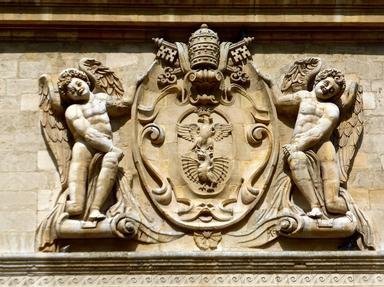4. This island nation features a key on its coat of arms, as well as on the coat of arms of its capital city. Which island nation of the Western Hemisphere, noted for its cigars, is it?
From Quiz The Key on Coats of Arms
Answer:
Cuba
On the Cuban coat of arms, a shield is divided into three parts. A gold key is on the top third in blue water with land on its left and right, symbolizing Cuba as the key to the Americas. Havana's coat of arms shows a gold key below three white towers, which represent three castles that defended Havana. The shield, or escutcheon, on the Jamaican coat of arms shows a red cross on a white field. On each arm of the cross and in its center are five pineapples. Cyprus, in the Mediterranean, and the Seychelles, in the Indian Ocean, are not in the Western Hemisphere.





 = Top 5% Rated Quiz,
= Top 5% Rated Quiz,
 Top 10% Rated Quiz,
Top 10% Rated Quiz,